Technology and the Opportunities for Interference Mitigation
Fundamentally, every active sensing system, be it monostatic or bistatic in configuration, is a communication system consisting of a transmitting source and a receiver. Owing to advances realized in the past decade in the technology used in cellular mobile phone applications, opportunities for improving coexistence with radio-frequency interference (RFI) have improved significantly. However, these benefits offer more to the world of communications than to sensing applications. Each communications link has a definable signal-to-interference-plus-noise ratio (SINR) threshold, and any signal above the threshold level meets the minimum requirements for the establishment of robust data transfer. If interference exceeds this threshold, it is sometimes still possible to apply technological remedies that reduce the interference to a level below the threshold, thereby recovering the data without loss of information. In a sensing application, however, the target environment has many thresholds because the strength of the signal scattered from the atmospheric volume or the land or ocean surface may vary over a wide range, so there is no clear or absolute level for successful interference mitigation. Even so, there are opportunities for the better use of established approaches to reduce interference. The opportunities include both unilateral methods, wherein no cooperation between users in the same spectrum is needed, and sharing methods, wherein coordination between users in the same spectrum is required.
UNILATERAL TECHNIQUES AND STRATEGIES
Active remote sensing implies the use of a transmit signal, whereas passive remote sensing implies that the sensing operation uses a receive-only mode. In the case of unilateral methods, there are two techniques for dealing with other signals in the sensing spectrum. In the first technique, the potentially interfering signal is used directly as the source for active sensing. In the second, mitigation techniques to reduce the level of interference are applied without cooperation from the source of the interference.
If an active remote sensing system relies on the transmission of an independent signal that is already present in the spectrum, allocation of additional spectrum is not necessary for the sensing function. Two key examples are provided to illustrate the process: (1) global navigation satellite system (GNSS) signals and (2) TV and radio broadcast signals. In both cases, the sensor operates in a bistatic mode by measuring the signal transmitted by such sources, after reflection/scattering by the medium or surface of interest.
The Global Positioning System (GPS) provides between 24 and 32 L-band space-based transmit signals radiating towards Earth. GNSS signals from other systems, such as GLONASS, Galileo, and Beidau, are also available in the same frequency band. These forms of radio and microwave signals are analogous to multiple low-power “suns” for optical passive remote sensing (i.e., taking a picture with a camera). The distribution of these signals provides multiple sources for sensing at any time, and to continue the same optical analogy, these signals ensure that there is daylight with four or more “suns” continuously at every spot on Earth.
The state of the ionosphere is important in predicting the possible degradation of space-ground communication signals. Signals from the GPS to ground-based receivers provide a measurement of the total electron content (TEC) along multiple paths through the ionosphere. The website at www.swpc.noaa.gov/ustec provides daily reports like that shown in Figure 9.1, along with trends and historical data.
Upward-looking ground-based microwave radiometers can provide accurate information on the height profiles of temperature, air density, and other atmospheric parameters, but the technique is essentially limited to the lowermost 10 km in altitude. Downward-looking satellite-borne radiometers are also best suited for profiling approximately the same altitude range, but they can do so globally. Higher-altitude profiles can be measured by radiosondes launched on balloons, but the information is specific to the geographic location of the radiosonde launch position. While there are hundreds of sites worldwide that perform sensing of the atmosphere with balloon-based sensors, the information is geographically sparse, especially over the maritime environment. To improve the coverage and fidelity of this atmospheric data, a new method was developed using the space-based reception of the occultation of a space-based radio signal to profile atmospheric
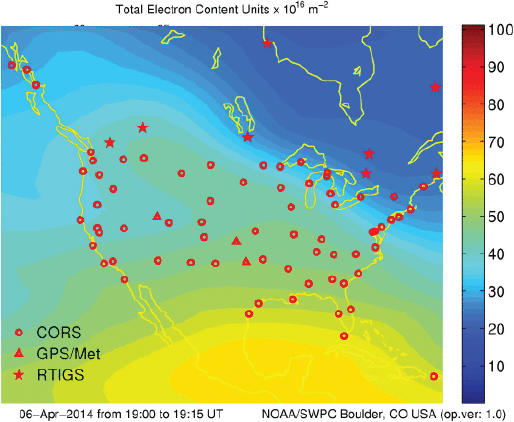
FIGURE 9.1 Current total electron content levels and the locations of ground receivers are shown for April 6, 2014, for North America. NOTE: CORS, Continuously Operating Reference Station; RTIGS, Real Time International GNSS Service. SOURCE: NOAA Space Weather Prediction Center, “U.S. Total Electron Content,” http://www.swpc.noaa.gov/products/us-total-electron-content, accessed August 3, 2015.
density and temperature, and the GPS signal is an important part of this technique. Figure 9.2 shows how a low Earth orbit (LEO) satellite can observe the GPS signal as the geometry causes occultation of the signal.
After inversion of the measured data using the geometry of the occultation, high-resolution profiles are generated for a wide range of altitudes extending between 8 and 30 km or higher. The indirect occultation measurements are compared to the direct radiosonde sensors on a weather balloon in Figure 9.3.
The temperature estimates based on occultation are more accurate than those predicted by the current European Centre for Medium-Range Weather Forecasts (ECMWF) model, which is based on the combination of inputs from ground, aircraft, ships, weather balloons, and other space instruments without occultation inputs. The improved data collection that led to these operational systems
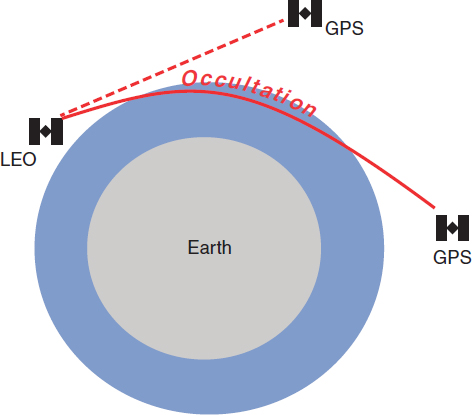
FIGURE 9.2 Variations in the GPS signal as the rays pass through the lower atmosphere are used for determination of atmospheric density, temperature, and pressure profiles.
was accomplished without the allocation of additional radio spectrum. Instead, these accomplishments can be attributed to novel technologies that reuse existing “signals of opportunity.”
Another example of a bistatic radar that uses an external source for illumination is shown in Figure 9.4.
The two approaches to wind vector measurements—backscatter and bistatic—agree to within 1-2 m/s, and the bistatic system has an enhanced ability to detect the low-level divergence under the cell owing to better clutter filtering and shorter range to target.1 The signal source for both measurements is the S-band multimission hemispheric radar (MHR), which is a NEXRAD prototype radar.
A second approach to unilateral sharing of the spectrum involves using tech-
___________
1 J. Wurman, M. Randall, C.L. Frush, and E. Loew, Design of a bistatic dual-Doppler radar for retrieving vector winds using one transmitter and a remote low-gain passive receiver, Proceedings of the IEEE 82(12):1861-1872, 1994.
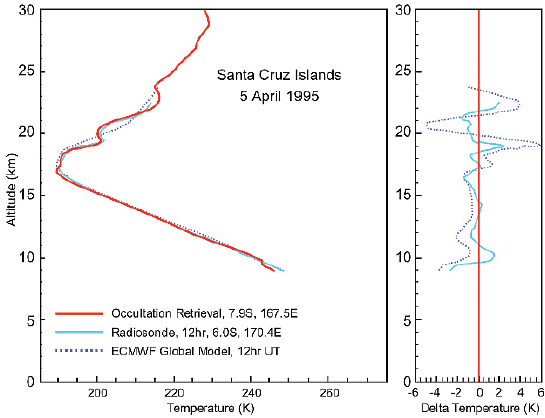
FIGURE 9.3 Comparison of temperature profile based on occultation and radiosonde measurements. SOURCE: Tom Yunck, Jet Propulsion Laboratory.
niques and methods to reduce or mitigate interference. Examples of RFI reports and the application of notch-filtering to mitigate RFI effects are available in Chapter 8.
Unilateral approaches to interference mitigation are used when appropriate. In some applications, however, there is no effective method of cooperation. In other cases, the sources of interference are too numerous for effective enforcement of the actual spectrum allocation and/or authorization. Better remote sensing in the presence of other users of the spectrum comes from sharing the spectrum cooperatively.
SHARING TECHNIQUES AND STRATEGIES
Frequency, time, and space are the three fundamental domains for the presence of an electromagnetic (EM) signal. Within these three domains, an EM signal has one more degree of freedom—namely, its polarization. Furthermore, a powerful combination of frequency and time used for signal isolation is coding, and while coding is not a unique domain, it is widely used and well characterized in com-
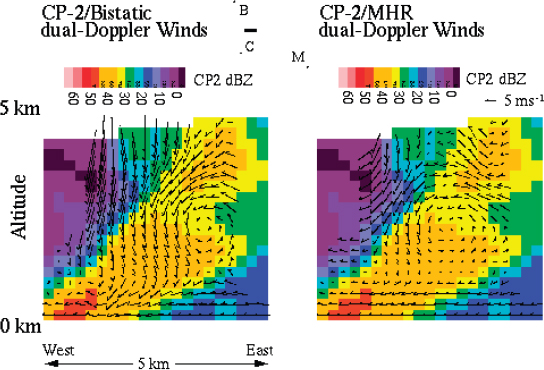
FIGURE 9.4 Comparison of wind vector profile data obtained in bistatic mode (left) with the mile high radar (MHR) in backscatter mode (right). SOURCE: Joshua Wurman, Center for Severe Weather Research, Research; see J. Wurman, M. Randall, C.L. Frush, and E. Loew, Design of a bistatic dual-Doppler radar for retrieving vector winds using one transmitter and a remote low-gain passive receiver, Proceedings of the IEEE 82(12):1861-1872, 1994. Reprinted, with permission.
munications and some sensing applications. Finally, the power of a signal impacts the level of that signal at other ranges, and this impacts the spatial domain. This section examines all of the six dimensions of frequency, time, space, polarization, code, and power control (Figure 9.5).
Frequency Domain
The frequency domain is assumed to be limited to only allocated and assigned users (Figure 9.6). It should be noted that there are practical limitations to this assumption, which creates a form of sharing even when there is no desire to share. For example, the frequency spectrum of signals radiated by faulty or poorly designed equipment may drift outside the desired band of operation and infringe on other portions of the spectrum. Older receive equipment may lack proper front-end filtering, and the presence of two or more signals from other spectral
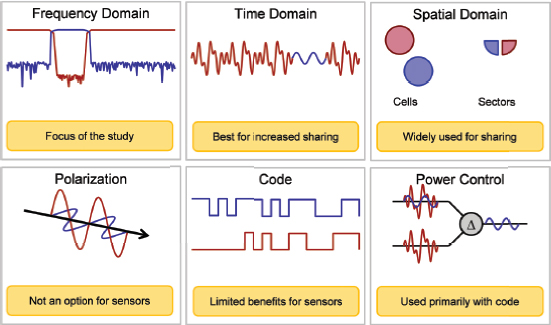
FIGURE 9.5 Six domains of potential sharing are considered. SOURCE: FIRST RF Corporation.
allocations at the front end of this equipment may mix via nonlinear effects to cause interference in, or partially outside, the spectrum served by this equipment. Older transmitting equipment may lack the filtering to meet adjacent spectral allocations, and/or the wave shaping, especially for pulsed signals, may be insufficient to reduce transient creation of spurious products that fall outside the spectral allocation for this equipment. As technology advances, these issues tend to decrease.
Time Domain
The most powerful form of cooperative sharing is in the time domain. In its simplest form, a single user has full use of a segment of the spectrum for a specific time slot, and no other signals are present during the assigned time period, so there is effectively no interference. With longer time slots or “slow” time, there is little issue with alignment accuracy of the time slots or transient effects of users moving into or out of assigned slots. Figure 9.7 illustrates this concept.
When the time slots occur very quickly, more serious issues may occur in dealing with the timing accuracy and transient effects. In general, sharing fast time slots, as shown in Figure 9.8, is best implemented by a single-spectrum user, as there is a monetary value to better control of these effects.
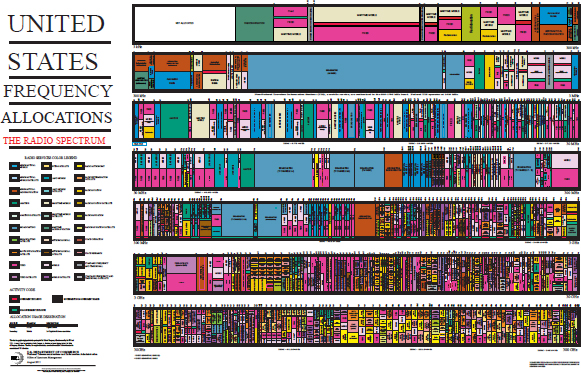
FIGURE 9.6 Frequency (spectrum) allocation is shown in this chart. SOURCE: U.S. Department of Commerce.
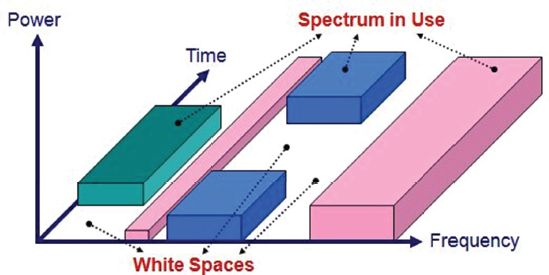
FIGURE 9.7 Sharing in “slow” time has nearly infinite isolation. SOURCE: Electronic Communications Committee, European Conference of Postal and Telecommunications Administrations (CEPT), ECC Newsletter, June 2011, http://www.cept.org/ecc/who-we-are/ecc-newsletters; diagram reproduced with permission of the CEPT.
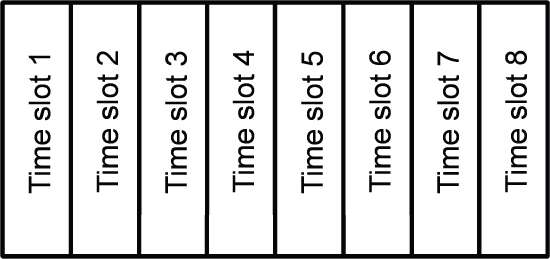
FIGURE 9.8 Sharing in fast time is called time division multiple access (TDMA). SOURCE: Dean Paschen, First RF Corporation.
Spatial Domain
In a manner similar to temporal sharing, a given spectrum allocation can be shared spatially. The rapid increase in data rates to mobile users is directly a result of efficient spatial sharing of the spectrum, as illustrated in Figure 9.9 for the early layout of the cellular mobile phone system.
Sharing in space can be nearly as effective as sharing in time. The limitations, which are best managed by a single motivated user, are primarily due to leakage of the signal from one spatial cell into an adjacent cell. The motivated user generally implements some form of power control, so that only the required power for the communication link is used, and this reduces the potential for leakage relative to the case where all signals operate at full power. Much of the foreseeable future gains in data bandwidth to mobile users will be due to spatial sharing. The cell diameters will be reduced, and the cells will be split into subsectors, as shown in Figure 9.10.
Progress in spatial sharing can be seen in the terminology used in the cell phone industry. The largest cell size is called a macrocell. Microcells, picocells, and even femtocells are terms that indicate the decreasing size of each spatial cell. As the cell size decreases, the benefits of spatial sharing increase.
A femtocell is a low-power device that handles very localized wireless traffic. Femtocells allow wireless coverage to be extended from the edges of the areas covered by larger cells into small but high-demand areas (for example, buildings) for less cost than deploying a partially redundant larger cell.
A recent development in spatial sharing, which falls outside the cell phone
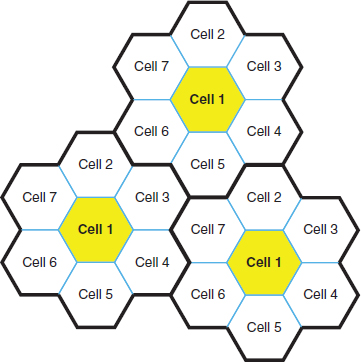
FIGURE 9.9 Early cellular systems achieved a frequency reuse factor of 7 through spatial sharing.
industry, is the April 1, 2014, release of modifications to Part 15 of the Code of Federal Regulations, Title 47 (ET Docket No. 13-49) to support the Unlicensed National Information Infrastructure (U-NII). Two features are implemented to protect the spectrum, with the first being a security feature to prevent simple modification of the hardware to change the frequency. The second feature is a new implementation of spatial sharing between different users of the spectrum: devices within 35 km of a terminal Doppler weather radar (TDWR) location must be separated by at least 30 MHz (center-to-center) from the TDWR operating frequency, and the rule includes procedures for registering the devices in an industry-sponsored database.
Polarization Diversity
Polarization is another sharing domain that offers the potential for doubling the amount of data in a single spectral allocation. In satellite communications (SATCOM), this domain is nearly always used. In SATCOM links, polarization is used to tighten the spacing between frequency slots without total overlap of the spectrum used between the two orthogonal polarizations, as illustrated in Figure 9.11 for C-band operation.
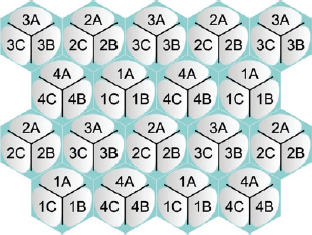
FIGURE 9.10 Spectral sharing efficiency is improved with the use of three sectors within a cell and a frequency-reuse factor of 4 between cells. SOURCE: Courtesy of TruTeq Wireless, truteq.com.
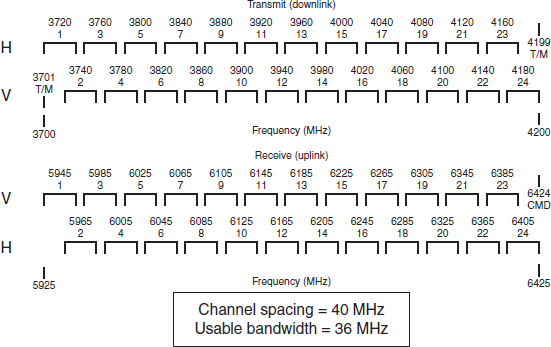
FIGURE 9.11 The basic 24-channel transponder alignment is shown at the C-band (3.7-6.5 GHz).
However, polarization is not always a good candidate for sharing between active sensors and other users of the same spectrum. In ground-based weather radar, for example, measurements of the backscatter from a precipitating volume made at orthogonal polarizations are used to distinguish between rain and snow and to determine the precipitation rate, so sensor control over the polarization domain is required.
Code Domain
In cellular communication systems, a subset of the spectrum may be allocated to separate users, and this is called frequency division multiple access (FDMA). As discussed earlier, time slots within each frequency slot may be used by multiple users, and this is called time division multiple access (TDMA). Time and frequency are orthogonal domains. An alternative form of sharing spectrum that combines time and frequency into a set of codes is called code domain multiple access (CDMA) (Figure 9.12).
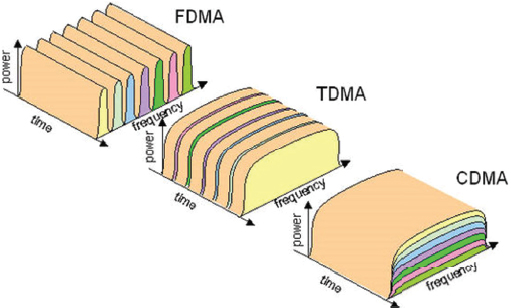
FIGURE 9.12 CDMA is the combination of time and frequency into codes that overlap in both the time and frequency domains. SOURCE: J. Zhang,Y. Liu, Ș.K. Özdemir, R.-B. Wu, F. Gao, X.-B. Wang, L. Yang, and F. Nori, Quantum internet using code division multiple access, Nature’s Scientific Reports 3:2211; licensed under a Creative Commons Attribution 3.0 Unported License, http://creativecommons.org/licenses/by/3.0/.
In the code domain, each bit of data for different users is encoded with a unique code. The coding of a single bit of data with multiple bits of code spreads the bandwidth of the original signal. This spread-spectrum approach takes a given bit in time and spreads the spectral content. Since the codes are isolated from each other, the individual signals can be recovered by mixing them with the same spreading code during reception and detection, so there is no effective loss to the number of users in the same time and frequency.
The code domain is not a new domain. Rather, it is a transformation of two existing orthogonal domains (time and frequency). While orthogonal or independent codes do exist, there is a limited number of codes, and they require time synchronization to achieve true orthogonality. To avoid synchronization issues, modern CDMA systems use nonorthogonal codes. These practical codes operate without the need for precise synchronization, but the isolation is less than that obtainable for an orthogonal code. This limitation in isolation, coupled with the larger dynamic range required in active sensor systems, means that there is limited benefit for the use of the code domain in active sensing systems. However, if there are known interferers using a known code set, there are opportunities for both unilateral and cooperative sharing using this technology.
Power Control
In conjunction with spatial sharing, power control is very important. If too much power is used, leakage occurs into nearby spatial regions. In CDMA systems, power control becomes even more important, and the issue is known as the “near-far problem.” The isolation between two codes is based on the cross-correlation of the codes as designed or selected. This isolation assumes equal power at the receiver/detector. When the power levels are different, as illustrated in Figure 9.13, the expected isolation from the cross-correlation of the code can be compromised.
To deal with this loss in isolation, each phone in a CDMA communication system is controlled to provide equal power at the base station to minimize the reduced orthogonality of the near-far problem.
Sharing the spectrum works best when all users of a particular portion of the spectrum are motivated to use the spectrum efficiently. Cell phone systems are examples of excellent spectral utilization. Each telecommunication company is assigned a segment of the spectrum, and all sharing of that segment is designed specifically for that company and its customers. The financial benefits to each company motivate the best sharing practices.
The sharing of the spectrum by less motivated users is not as promising. As mentioned earlier, a communication user may be unaware of another signal in the same spectrum as long as the detected data have few uncorrected errors. An active sensor, however, can miss the detection of long-range or low-visibility targets at

FIGURE 9.13 The detected power for different ranges at equal transmit power is different. SOURCE: Shimada Masanobu, Tokya Denki University.
much lower levels of interference. The limitations to sharing for active sensing applications comprise the topic of the next section.
BEST OPPORTUNITIES FOR SHARING
As discussed previously, wireless communication systems have already demonstrated the ability to share the spectrum. Spatial sharing in this community has provided more gains in capacity than increases in spectrum. The wireless communication industry is moving to continue the capacity gains by a migration to smaller cells at higher frequencies. These femtocells operating at millimeter wavelengths will dramatically increase system capacity.
In the world of active sensors, radar systems are also known to share well, and there is an opportunity to conserve spectrum by better sharing. As discussed in Chapter 2 (see the section “Future Trends and Concepts—Ground-Based Radar”), the National Oceanic and Atmospheric Administration (NOAA) and the Federal Aviation Administration (FAA) are considering a proposal to move the Air Route Surveillance Radar (ARSR) and TDWR systems, which are currently in different frequency bands across the L-, C-, and S-bands, into the existing S-band spectrum (2.7-3.0 GHz) for air traffic control and weather radar, with the use of phased array methods in place of existing mechanically steered radar systems.2 The MPAR concept would enable rapid-update weather observations that are fundamentally important for severe weather safety, among other significant improvements, benefiting both the active sensing community and the public. Another advantage of an MPAR system would be its improved spectral efficiency, since radars operating
___________
2Multifunction Phased Array Radar (MPAR), Notional Functional Requirements Document, Version 2.2, April 18, 2013.
across different frequency bands would be replaced with radars in a single band. From an economic standpoint, an advanced radar network with a common design would inherently have much lower maintenance and operation costs.
It is important to make the technology transition to support the multiple functions from a single radar site in the single frequency band. In addition, the existing S-band radar spectrum may be reduced further through the use of similar techniques to wireless communication systems.
Although active sensor systems are sensitive to interference from communication systems, the opposite case of radar system interference to modern communication systems using forward error correction (FEC) is very limited. In fact, for radar waveforms with narrow pulse widths and low duty cycles that impact less than 0.5 percent of the symbols in a communication system, it is necessary for the radar signal level to be 50-70 dB higher than the carrier level of the communication system to cause failure.3 It should be possible for Earth imaging systems to operate in existing communication bands when certain waveform features are used in the radar system. The radar systems will still need to apply notching in the areas of high spectral power density, but this adherence to waveform guidelines would eliminate interference to any communication devices present in portions of the spectrum that are still considered to be effective for the radar system.
The National Science Foundation’s (NSF’s) Enhancing Access to the Radio Spectrum (EARS) program funds multidisciplinary research in technologies and techniques with potential to greatly increase the efficiency of spectrum, including sharing. For example, since space-based, active remote sensing sensors typically observe a single spot on Earth only a few times per day, they could coordinate with other transmitting services to more efficiently use the spectrum otherwise reserved only for remote sensing when not in use by remote sensing. Vice versa, when incumbent transmitting services are not using a band, active remote sensing sensors could do so. This example is but one sharing possibility based in the time domain. As the program proceeds and research is conducted, it is likely that many new sharing techniques will be developed.
LIMITATIONS OF MITIGATION TECHNIQUES AND STRATEGIES
While both unilateral methods of interference mitigation and cooperative approaches to sharing the spectrum offer benefits, it is important to also understand their limitations. In the unilateral case, the limits of mitigation are dictated
___________
3 F.H. Sanders, Measurements of Pulsed Co-Channel Interference in a 4 GHz Digital Earth Station Receiver, NTIA Report 02-393, National Telecommunications and Information Administration, Washington, DC., 2002.
by the physics of the interference process. In contrast, with cooperative sharing, mitigation is limited more by issues of management.
For unilateral interference mitigation, the optimum approach is to probe the channel and adjust the transmit waveform for minimum correlation with the channel interference characteristics. A simple form of this (previously discussed) is notch filtering. Basic notch filtering removes high-level aspects of the interference as determined by spectral analysis of the channel. The technique is not always successful, however. An example of a synthetic aperture radar (SAR) image before and after basic notch filtering is shown in Figure 9.14.
While RFI may be mitigated for the conventional SAR image, there are other data products that may still be impacted. Interferometric SAR (InSAR), which compares the phase information between two or more images, can be degraded at a much lower residual RFI levels. The closely related data product of coherent change detection (CCD), which compares the complex correlation between two or more images, is also dependent on the phase information and can be impacted at much lower levels of residual, and effectively unmitigated, RFI.
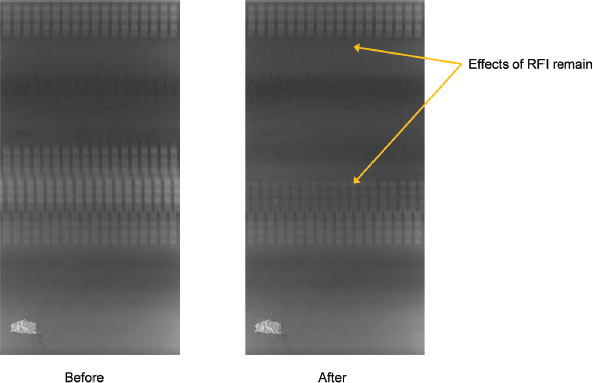
FIGURE 9.14 While spectral notching reduces radio-frequency interference (RFI) effects to active sensors, the RFI may not be completely eliminated. SOURCE: Shimada Masanobu, Tokya Denki University.
When sharing spectrum between cooperative users, there are many logistical issues that may limit the quality of the signals for the various stakeholders. The following examples illustrate some of the issues that arise when time and space sharing are used.
Sharing that occurs over relatively slow periods of time (e.g., minutes or longer) is generally based on established schedules. If a schedule is not properly communicated to all users, there can be deviations that might cause interference. There can be breakdowns in managing a schedule across time zones, especially at transition points like changing from Standard Time to Daylight Saving Time or crossing over fractional time zones.
When sharing over faster time intervals, timing accuracy becomes an issue. This may be due to the frequency stability of a reference oscillator, although current technology provides many high-accuracy clocks. More likely, this is due to spatial separation of the various users, which creates a time offset that is difficult to coordinate between multiple users. For example, a time slot set up to synchronize with a close user may be out of sync with a user further away. Even with precise information about the location of all users, there may be no solution other than to increase the guard band of the channel to avoid collisions, which would decrease the spatial/temporal efficiency.
Spatial sharing has similar issues. If a ground-based sensor is located beyond the line of sight to another ground-based sensor in the higher frequency bands where ionospheric scattering is not present, a large scattering object (e.g. blimp, aircraft, and so on) can still provide a reflected path from one sensor to the other. In cases where power control is used to limit the interference between two sensors, a variety of mechanisms exist to convey power at a much higher level (e.g., ducting, scattering by large objects, multipath, and the like).
Although radar systems are known to share well with other radar systems of a similar type, ground-based radar systems do not share well with airborne and spaceborne radar systems, even though Earth-imaging airborne and spaceborne radar systems share well. Therefore, specific radar bands are best allocated for either ground-based systems or Earth-imaging systems.
Finding 9.1: From the perspective of efficient spectrum usage, the active sensing community would benefit from consolidating the L-, C-, and S-band radar assets of NOAA and the FAA to a single multifunction radar at the S-band, as proposed by the Multifunction Phased Array Radar program.
Recommendation 9.1: The committee recommends an investigation of spatial frequency reuse techniques (for example, 7-to-1 spatial frequency saving) to reduce
the total S-band spectrum requirements. The existing L-band spectrum should be maintained for Earth-imaging radar use.
Finding 9.3: The use of millimeter-wave frequencies for shortwave, femtocell-sized communications would increase network capacity by an order of magnitude, thereby reducing pressure on the spectrum and on the active sensing science services, as well.
Recommendation 9.2: The wireless industry should pursue the femtocell approach by developing towers, networks, and the like to add the use of millimeter-wave frequencies for communications in 6G communication standards and up.
Finding 9.4: Communications systems are highly resistant to interference from radar systems with narrow pulse waveforms and low duty cycles, which are typical characteristics of scientific and operational radars.
Recommendation 9.3: The Federal Communications Commission or the National Telecommunications and Information Administration should permit radar systems meeting specific criteria for pulse repetition, maximum pulse width, and duty cycle to operate in communications bands as secondary users, where minimal interference to the communications operations would be expected to occur.


















